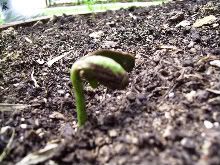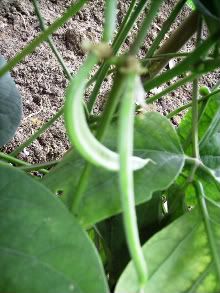What enables Post It notes to stay up on any surface?
Explain how that helps to keep the note up.
(When in doubt, ask other questions that can help you clarify how to answer the question)
How To Soar in PSLE - BTPS Way!!
Interact with complex questions / graphs / pictures to pick up valuable clues (don't highlight - just use your pen to underline words or scribble notes)
Start with Booklet A and do it meticulously with full focus - explore all 4 distractors before making final choice.
MANAGE your TIME - to score well, you need to try to finish ALL questions.
Specific answers = answers that are relevant to question.
When confused, choose any of the following strategies:
1. Ask, "What Science idea is being used in question?"
2. Pose other questions to clarify your thoughts
3. COMPARE to another set-up
4. COMPARE to a reverse situation
5. Connect to your knowledge in life (yes, you do have lots of prior / other knowledge)
6. Break down your answer in steps before crafting final answer.
Common problems with wrong answers:
*Answers are generic/vague and do not connect to that specific question
*Answers are not scientific and do not explain using Science ideas
*Answers do not make use of data provided when asked
*Answers did not make comparisons - use words like more/most etc..when asked
BTPS supports all P6 in achieving their PSLE GOALS!!
Start with Booklet A and do it meticulously with full focus - explore all 4 distractors before making final choice.
MANAGE your TIME - to score well, you need to try to finish ALL questions.
Specific answers = answers that are relevant to question.
When confused, choose any of the following strategies:
1. Ask, "What Science idea is being used in question?"
2. Pose other questions to clarify your thoughts
3. COMPARE to another set-up
4. COMPARE to a reverse situation
5. Connect to your knowledge in life (yes, you do have lots of prior / other knowledge)
6. Break down your answer in steps before crafting final answer.
Common problems with wrong answers:
*Answers are generic/vague and do not connect to that specific question
*Answers are not scientific and do not explain using Science ideas
*Answers do not make use of data provided when asked
*Answers did not make comparisons - use words like more/most etc..when asked
BTPS supports all P6 in achieving their PSLE GOALS!!
Sunday, September 6, 2009
Roasting Chestnuts in China Town
Chestnuts are mixed with sandlike particles for roasting.
What is the purpose of using that?
(When in doubt about a question - always ask this: As compared to what?)Therefore why should he use the particles instead of just placing the chestnuts straight on the fire?
How would changing the size of the particles affect the cooking?
Explain why.
Sea Bean Marvel
What is in a seed? How do you think it is dispersed?
Although the Sea Bean is in a pod, it drops off one seed in one section at a time.
How different is it from other legumes? Why has it developed this adaptation?
Sunny Sunflowers
What are the differences in the two flowers?
One seed or Many seeds? Explain how you came to your conclusion.
Creepy Creepers
What are the similarities and differences in the two plants below.
How do they overcome the problem of their weak stems?
Carnivorous Plants
The following plants are found in the wilderness in marshes and bogs.
Such plants feed on insects.
Compare these carnivorous plants to the ususal food producers.
What could be the cause of their physical and behavioural adaptation?
Such plants feed on insects.
Compare these carnivorous plants to the ususal food producers.
What could be the cause of their physical and behavioural adaptation?
What are the consequences of their adaptation?
Cranberry Jam in a Jar
This jam was cooked with sugar before being placed in a jar.
What was the purpose of cooking the cranberries first?
How did the fungi grow inside the jar?
What was the purpose of cooking the cranberries first?
How did the fungi grow inside the jar?
Subscribe to:
Posts (Atom)
Science Around Me (SAM)
SAM is a Science journal that allows pupils to express themselves in their favourite ways about Science.
SAM is another great opportunity for pupils to THINK and TALK Science in a medium that is customised to their learning styles.
SAM allows teachers to informally assess understanding of the child and clarify misconceptions in their learning.
SAM is another great opportunity for pupils to THINK and TALK Science in a medium that is customised to their learning styles.
SAM allows teachers to informally assess understanding of the child and clarify misconceptions in their learning.
Factors Affecting the Environment by Gog Ru Yan - 6G

When Ice Changes into Water by Goh Chee Yan - 5G
Do you wonder whether the mass of ice changes when it melts into water. Try this out:
1. Put a few ice cubes into a plastic bag
2. Tie the mouth of the bag tightly
3. Weigh the bag of ice cubes (if there is condensation outside the bag, wipe it dry before weighing)
4. Place the bag in the sun
5. When ice has melted, wipe the outside of the bag dry (refer to step 3)
6. Weigh the bag
You will discover that the mass of the bag remains the same!
There is no change in mass when ice melts!!
1. Put a few ice cubes into a plastic bag
2. Tie the mouth of the bag tightly
3. Weigh the bag of ice cubes (if there is condensation outside the bag, wipe it dry before weighing)
4. Place the bag in the sun
5. When ice has melted, wipe the outside of the bag dry (refer to step 3)
6. Weigh the bag
You will discover that the mass of the bag remains the same!
There is no change in mass when ice melts!!
Simple Steps to fight Dengue by Elizabeth Wu 4C


















